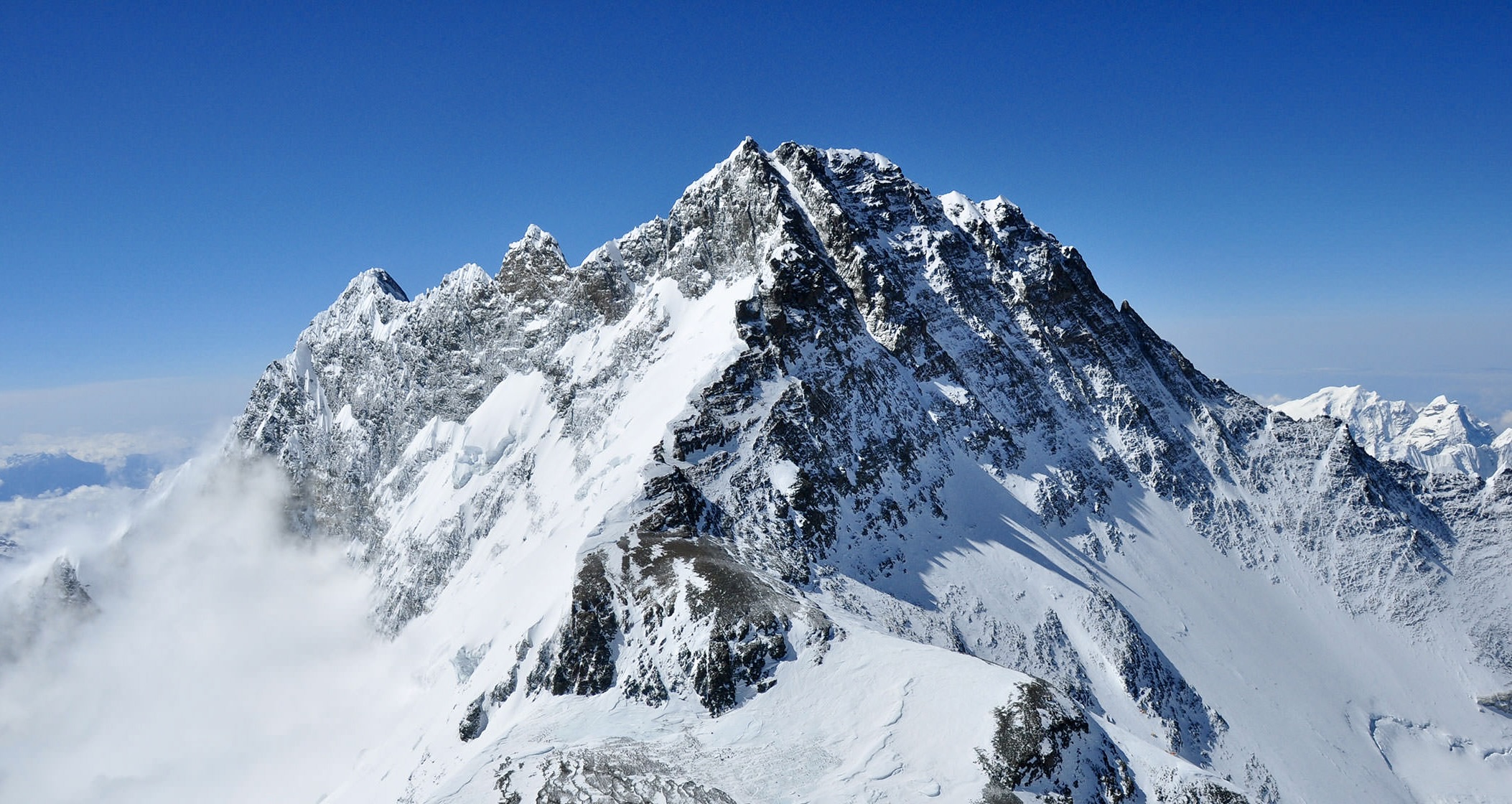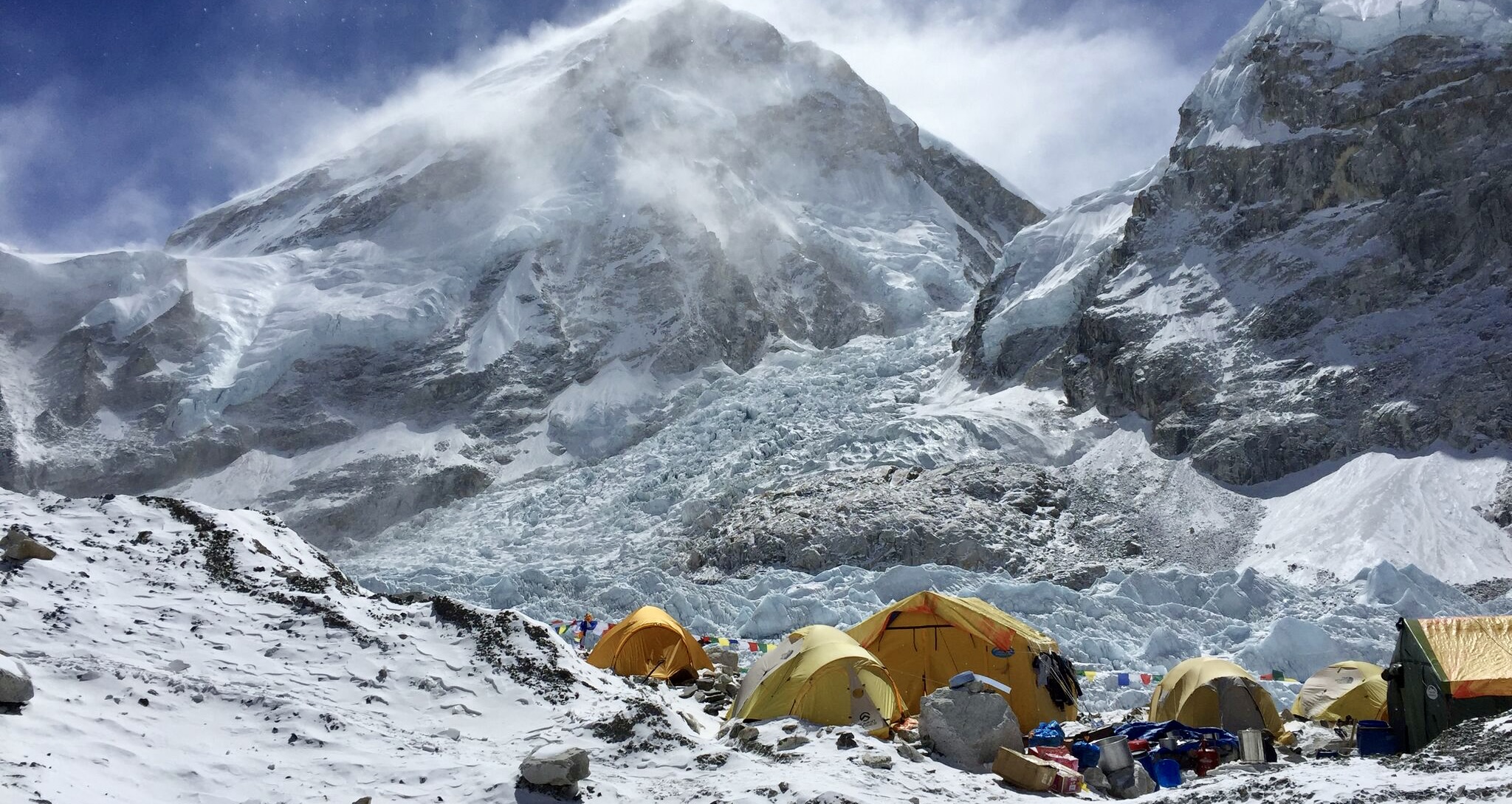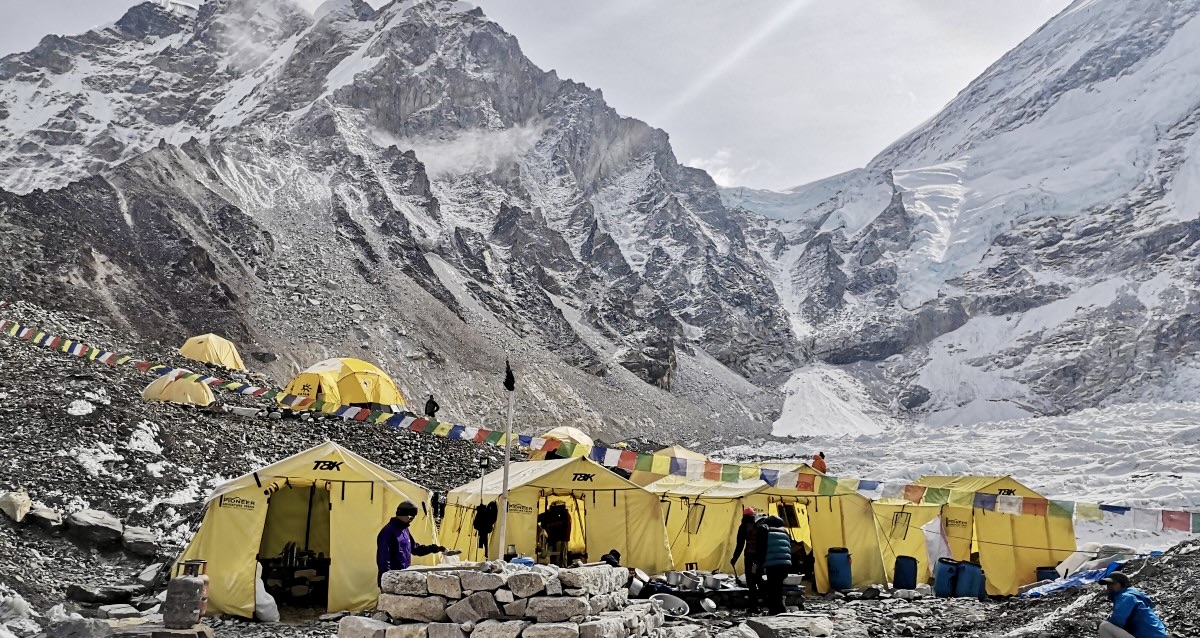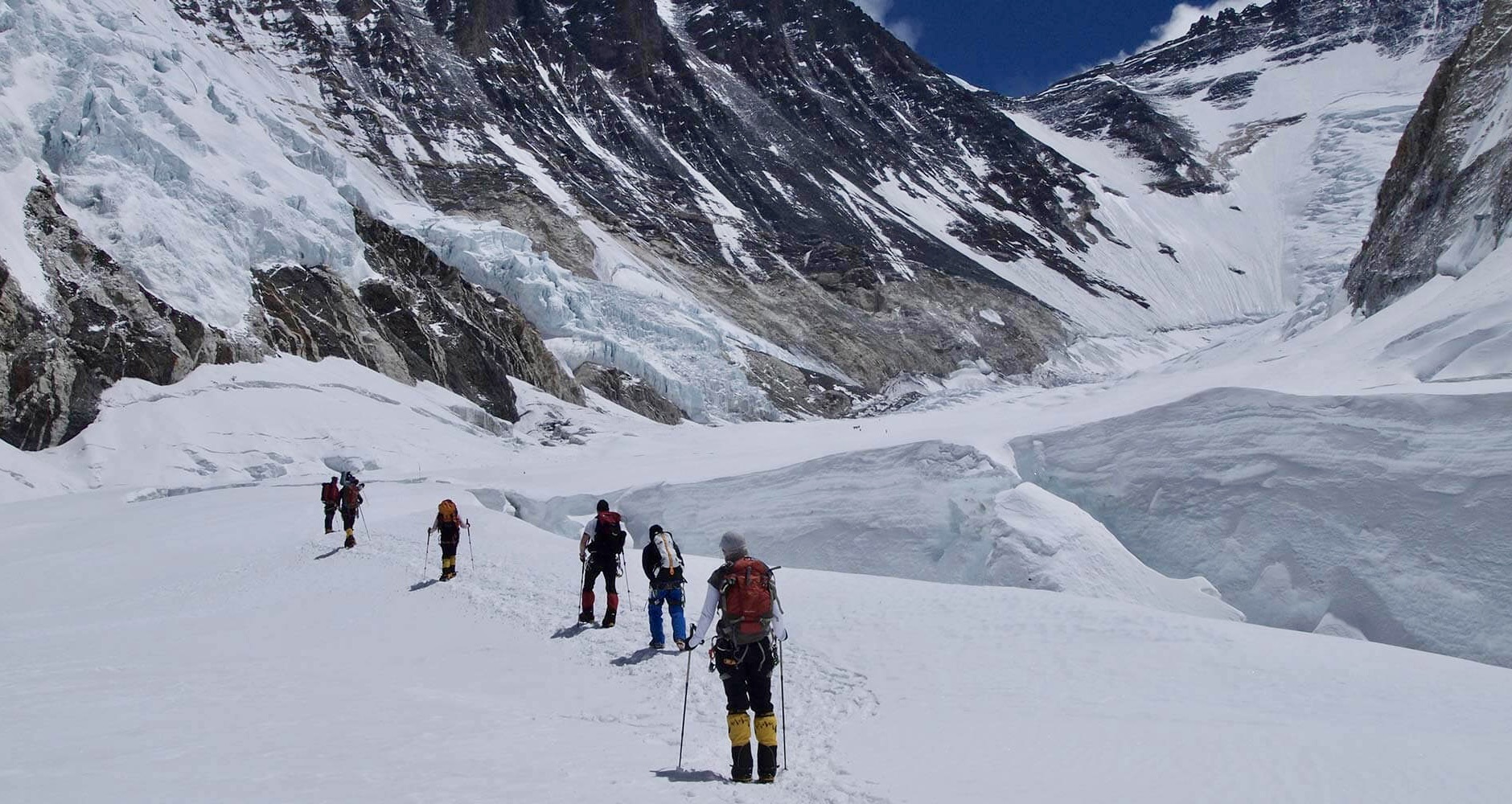Ever stood at the edge of the abyss, staring up at a wall of ice so sheer it seems to defy gravity, knowing that only the elite dare to challenge it? That's Lhotse – the "South Peak" that guards Everest's southern flank like a silent warrior. And you're contemplating an assault on its 8,516-meter throne.
I get it. There's an inexplicable allure to these Himalayan behemoths that draws climbers back, time and again. The call is almost spiritual, a whisper from the gods of the mountains.
An Lhotse expedition isn't for the faint-hearted – it's a brutal test of technical prowess, where the thin air and relentless exposure strip away all pretenses. At 8,516 meters, it demands unparalleled acclimatization, razor-sharp climbing skills, and a psyche forged in fire. Most who attempt it learn humility the hard way.
The real question isn't if Lhotse will humble you – it's whether you've got what it takes to rise from the ashes of exhaustion and claim its summit. And that's where so many falter, underestimating the mountain's unforgiving nature.
Lhotse: The Majestic Himalayan Peak

Geographic Location and Key Features
Lhotse rises dramatically in the Mahalangur Himal subrange of the Himalayas, forming an inseparable bond with Mount Everest along the Nepal-Tibet border. Known as the "South Peak" (Lhotse means "South Peak" in Tibetan), it shares the same massive base as Everest, connected via the infamous South Col – a windswept saddle at over 8,000 meters that's as beautiful as it is brutal.
This 8,000er boasts a formidable south face, a 3,000-meter ice wall that's one of the steepest and most iconic in the world. Its four summits – the main peak at 8,516m, Lhotse Shar (8,383m), and the middle and smaller summits – create a complex ridge system riddled with seracs, crevasses, and avalanche-prone slopes. Glaciers like the Lhotse Glacier carve through its flanks, feeding into the Khumbu Icefall below.
From Lhotse's heights, the views are otherworldly: Everest's Southwest Face looms directly across the col, while Makalu, Cho Oyu, and the rolling Kangchenjunga range stretch to the horizon. It's a climber's panorama, but one earned through peril.
Height and Climbing Difficulty Level
Towering at 8,516 meters (27,940 feet), Lhotse is the fourth-highest mountain on Earth, just 610 meters shy of Everest. Don't mistake its "supporting role" for ease – it's a PD+ (Peu Difficile Plus or "Slightly Difficult Plus") to TD (Très Difficile or "Very Difficult") climb, with sections pushing into the extreme.
The classic route via the South Col involves:
-
Steep ice climbing on the Lhotse Face (up to 50-60 degrees, fixed ropes essential)
-
Mixed rock and ice on the final summit ridge
-
High-altitude exposure with constant crevasse threats
-
Jet-stream winds that can exceed 100 km/h, turning the col into a frozen hurricane
Weather here is notoriously fickle; clear mornings can dissolve into whiteouts by noon. Avalanche risk on the face is ever-present, demanding precise timing and route-finding.
Historical Significance in Mountaineering
Lhotse entered the annals of history in 1956 when a Swiss expedition, led by Ernst Reiss and Fritz Luchsinger, made the first ascent just three years after Everest's conquest. This feat came during the same trip that saw the first traverse of Everest, cementing Lhotse's place as a pinnacle of post-Everest exploration.
Over the years, it has served as a proving ground for the world's best, with notable ascents including the first winter climb in 1984 by Polish climbers. Tragedies abound, too – from the 1996 disaster that claimed lives during the Everest-Lhotse combo to recent fatalities on the face. These stories underscore Lhotse's respect-demanding legacy, influencing modern high-altitude tactics and rescue operations.
Relationship to Mount Everest
Lhotse isn't just Everest's neighbor; it's its inseparable twin. Sharing the South Col, many expeditions tackle both peaks in a single push – the "Everest-Lhotse Traverse" is a dream route for alpinists. From Lhotse, you gaze directly at Everest's Hillary Step and Yellow Band, gaining insights that inform Everest strategies.
Ecologically, Lhotse's glaciers contribute to the Khumbu watershed, vital for downstream communities. For trekkers, it's the dramatic backdrop to Everest Base Camp, while climbers use it as the ultimate acclimatization step before Everest. In the mountaineering world, mastering Lhotse is often the gateway to Everest's summit – its technical demands mirror the big one's upper challenges.
Planning Your Lhotse Expedition

Best Seasons for Climbing Lhotse
Timing is everything on Lhotse – we've learned that the hard way. Spring (April-May) reigns supreme, with stable weather windows amid the pre-monsoon calm, though crowds swell at the shared base camp. Autumn (September-October) offers pristine conditions and fewer people, but shorter days and colder temps test resolve.
Winter ascents are rare and savage, with temps plunging to -50°C and unrelenting winds – only for the masochists. Monsoon (June-August) is off-limits; the face becomes a waterfall of slush.
Required Permits and Documentation
Bureaucracy is part of the game. For Lhotse, secure:
- Lhotse Climbing Permit: $11,000 per climber (royalty fee, non-refundable)
- Sagarmatha National Park Permit: $30
- TIMS Card: $20
- Liaison Officer Fee: Included in expedition packages
- Nepal Visa: $125
Apply 4-6 months ahead via the Nepal Tourism Board. You'll need a detailed climbing resume, medical certificates, and photos. We streamline this for our clients, ensuring compliance to avoid border hassles.
Recommended Physical Preparation
Lhotse chews up the unprepared. Start training 9-12 months out with:
-
Aerobic base: 5-6 hours weekly of running, rowing, or skiing
-
Strength focus: Deadlifts, squats, and pull-ups for climbing power
-
Altitude simulation: Hypoxic training or high-elevation hikes
-
Prior experience: At least one 7,000m+ peak under your belt
A sample regimen: 3 cardio days, 2 gym sessions, 1 technical climb, and loaded hikes (20-25kg pack) on weekends. VO2 max testing helps gauge readiness.
Essential Gear and Equipment
Lhotse gear is expedition-grade – no shortcuts:
Technical Kit:
-
Twin ice axes and 12-point crampons
-
Full harness with 10+ carabiners, Jumar ascenders
-
8,000m-rated boots (e.g., La Sportiva Olympus)
-
Helmet and goggles for wind/cold
Clothing System:
-
8,000m down suit or layered extremes (-50°C rated)
-
Vapor barrier layers to combat frostbite
-
Gore-Tex overboots and multiple mittens
Camping Essentials:
-
-40°C sleeping bag with liner
-
Double pads (inflatable + closed-cell)
-
High-output headlamp (500+ lumens)
Packs hit 15-20kg; yaks and Sherpas handle the heavy lift to base camp.
Budgeting for Your Expedition
Transparency is key – Lhotse demands investment:
|
Expense Category |
Approximate Cost (USD) |
|
Guided expedition package |
$50,000-$70,000 |
|
Permits and fees |
$12,000-$15,000 |
|
International flights |
$1,000-$2,000 |
|
Personal gear |
$5,000-$10,000 |
|
Insurance (evac + medical) |
$1,500-$3,000 |
|
Contingency |
$2,000-$5,000 |
Total: $70,000-$100,000+. Our all-inclusive packages cover logistics, but skimping on oxygen or guides courts disaster.
Everest Sherpa Expeditions Services

Our Experienced Sherpa Team
Our Sherpas are Himalayan royalty – legends like Pasang, with 20+ Lhotse summits, who navigate the face blindfolded. Born at altitude, they possess superhuman acclimatization, carrying loads that would crush most while fixing lines in gales. We select for technical mastery, medical training, and that unbreakable Sherpa spirit.
Customized Expedition Packages
Tailored to you: From Everest-Lhotse combos to pure Lhotse pushes, we adapt for your pace. Add-ons include pre-climb simulations or photography ops. Packages feature heated tents, oxygen systems (5-7 bottles per climber), and chef-prepared nutrition – fueling success at 8,000m.
Safety Protocols and Emergency Procedures
Safety is sacred. We enforce 1:1 ratios on the face, deploy Gamow bags, and use Iridium sat-phones for real-time forecasts. Protocols include mandatory turns at 80% saturation, helicopter meds, and crevasse drills. Our 95% safe return rate speaks volumes.
Success Rates and Testimonials
We boast an 85% summit rate – double the average – thanks to conservative strategies. "The Sherpas turned my Everest dream into Lhotse reality," says Mike from Canada. From novices to pros, our clients conquer with confidence.
The Climbing Route

Base Camp Establishment and Acclimatization
Base camp at 5,300m in the Khumbu is our fortress – tents amid ice towers, Everest in view. Acclimatization is methodical: Climb to Camp 1 (6,065m) via the Icefall, sleep low; rotate to Camp 2 (6,500m) multiple times. Two weeks here builds red blood cells before the col.
Technical Sections and Challenges
The Khumbu Icefall is a labyrinth of ladders and crevasses. Then, the Lhotse Face: A 1,125m blue-ice slab, front-pointing at 50 degrees amid falling seracs. The Yellow Band's rocky crux tests mixed skills, while the Geneva Spur adds exposure. Avalanches and hypoxia are constant foes.
Camp Positioning Strategy
-
Camp 2 (6,500m): Icefall haven for staging.
-
Camp 3 (7,200m): Midway up the face, wind-sheltered.
-
Camp 4 (7,900m, South Col): Exposed col, oxygen mandatory.
-
High Camp (8,300m): Final bivouac before the ridge.
Camps are prepped with stoves, meds, and radios – redundancy rules.
Summit Day Approach
Start at 2 AM from the col: Traverse to the face, ascend by headlamp through the crux. Dawn reveals Everest's majesty. The final 200m ridge is knife-edge, winds howling. Summit by 10 AM, descend fast – the mountain's mood shifts quickly.
Sherpas: Your Essential Companions

The Unique Skills of Sherpa Guides
Sherpas are altitude wizards – their genes allow effortless performance where oxygen fails. On Lhotse, they pioneer routes, manage oxygen flows, and execute rescues with precision born of generations.
Cultural Insights from Local Experts
Beyond ropes, they share Buddhist lore, the sanctity of the peaks, and mani stone meanings. Evenings feature momo-making sessions and tales of Tenzing Norgay, weaving culture into the climb.
How Sherpas Ensure Expedition Success
They fix 2km+ of ropes, cache supplies, and boost morale with high-camp feasts. Their foresight averts crises, turning 8,000m drudgery into shared triumph. The Sherpa-climber bond? It's the expedition's true summit.
Training and Preparation

Recommended Fitness Regimen
9 months minimum: Build to 6-8 hour endurance days, blending cardio (trail runs), strength (Olympic lifts), and hikes (3,000m+ gain). Simulate loads and stairs for the face.
High-Altitude Adaptation Techniques
Pre-trip: Hypoxic masks or altitude tents. On-mountain: 4L+ fluids, iron-rich diet, and rest rotations. We monitor with pulse oximeters.
Technical Skills to Master Before Arrival
Master icefall ladders, fixed-line ascents, and self-arrest. Complete an 7,000m expedition; practice in the Alps or Cascades.
Mental Preparation Strategies
Visualize the face daily; build resilience via cold exposure. Mantras and team-building foster unbreakable focus.
Post-Expedition Experience
Celebration Rituals
Base camp pujas thank the mountains; summit khadas and raksi toasts follow. Our Sherpas lead dances under prayer flags.
Recovery Recommendations
Rest 5-7 days: IV hydration, anti-inflammatories, and sleep. Avoid alcohol; ease into yoga.
Kathmandu Relaxation Options
Unwind at the Hyatt's spa or Bhaktapur's temples. Savor Newari cuisine at Krishnarpan; shop for pashminas in Thamel.
Certificate and Documentation
We secure NMA certificates, summit proofs, and logs – your legacy preserved.
Conclusion: Embrace the Lhotse Legacy

Climbing Lhotse is more than a conquest — it’s communion with a living force of nature. It stands as the thinking climber’s Everest: quieter, purer, and profoundly more demanding.
With Everest Sherpa Expeditions, you’re not just chasing altitude — you’re pursuing excellence, precision, and purpose. Our legacy on Lhotse speaks through our climbers’ success, safety, and satisfaction.
When you’re ready to step into Everest’s shadow and ascend where few dare to tread — the South Face of Lhotse awaits.
If you need any further information, please contact us by email: [email protected], Phone: +977- 980 195 6248 (WhatsApp).


